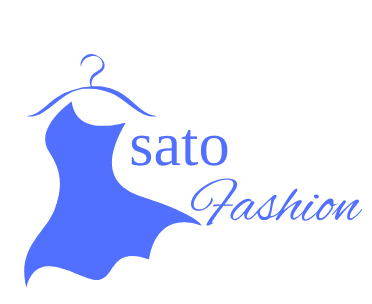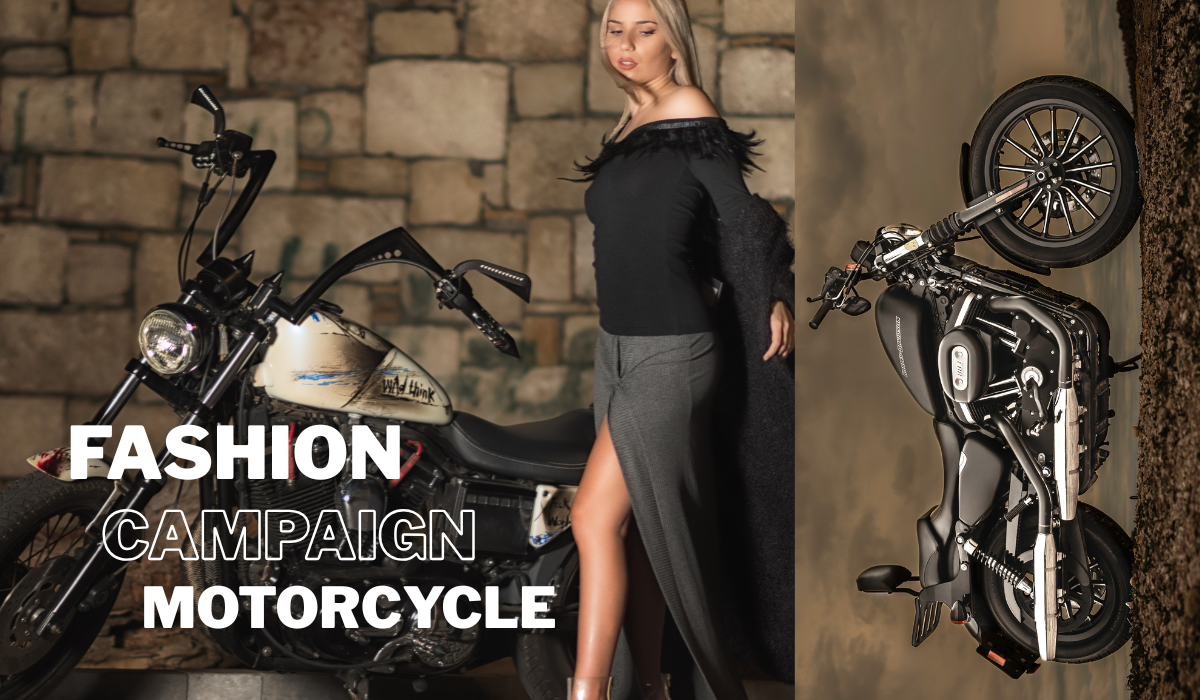In the meticulously curated world of fashion advertising, few props carry as much symbolic weight as the motorcycle. It’s a powerful, multifaceted icon that transcends its function as mere transportation. When a motorcycle roars into a fashion campaign, it brings with it a complex narrative of rebellion, freedom, authenticity, and rugged elegance. This article explores the cultural resonance, symbolic meaning, and strategic use of motorcycles within fashion photography and advertising, moving beyond mere product placement to understand the deeper story being told.
More Than a Prop: The Motorcycle as a Cultural Symbol
Fashion campaigns are visual short stories. Every element—the model’s expression, the lighting, the location, and the props—is chosen deliberately to convey a specific brand identity and emotional response. The motorcycle is chosen not for its engine specifications, but for the deeply ingrained cultural concepts it represents:
- Rebellion and Counter-Culture: The motorcycle’s most potent association stems from the post-World War II era, immortalized by Marlon Brando in The Wild One. It became the ultimate symbol of defiance against mainstream conformity. For a fashion brand, aligning with this imagery injects an edge of non-conformity and daring into its identity. It suggests the wearer is bold, independent, and unafraid to break the rules.
- Freedom and Escape: A motorcycle represents the open road, the horizon, and the unscripted journey. It evokes a sense of unbridled freedom, adventure, and escape from the mundane. Fashion campaigns leveraging this theme often sell a fantasy—not just of clothing, but of a lifestyle unbound by convention. The clothes become the uniform for this aspirational life of movement and discovery.
- Authenticity and Craftsmanship: Particularly with classic, vintage, or cafe racer motorcycles, there is a strong association with meticulous craftsmanship, mechanical purity, and heritage. This resonates perfectly with luxury brands, especially those in the leather goods, denim, or heritage sectors (e.g., Belstaff, Schott NYC). The bike mirrors the brand’s values: timeless design, quality materials, and artisanal skill.
- Rugged Elegance and Contrast: A key technique in fashion photography is the use of juxtaposition. The sleek, often delicate nature of high fashion placed against the raw, gritty, mechanical texture of a motorcycle creates a compelling visual tension. This contrast—between polished and rough, soft and hard, feminine and masculine—makes the clothing stand out and creates a narrative of versatile, resilient luxury.
How Motorcycles Define Brand Identity
The specific type of motorcycle chosen is never arbitrary; it is a precise tool for communicating a brand’s desired message.
- The Vintage Cafe Racer: Often used by heritage, minimalist, or “hip” fashion labels. A stripped-down 1960s Triumph or Norton suggests authenticity, a passion for classic design, and a less-is-more philosophy. It appeals to a consumer who values history, quality, and understated cool over flashy trends.
- The Classic American Cruiser: A Harley-Davidson or Indian motorcycle evokes a sense of Americana, rebellion, and raw power. It’s frequently used by denim brands, leather jacket makers, and labels wanting to project a tough, rugged, and authentically American image. This choice speaks to a spirit of independence and strength.
- The Modern Sport Bike: Sleek, aggressive, and technologically advanced, sport bikes are associated with speed, precision, and a futuristic aesthetic. They might be used by avant-garde designers, sportswear brands, or labels aiming for a sharp, modern, and high-energy vibe. This prop suggests the wearer is cutting-edge, dynamic, and performance-oriented.
- The Scrambler or Adventure Bike: Built for on- and off-road travel, these motorcycles symbolize exploration, capability, and a worldly spirit. They are perfect for campaigns selling outdoor apparel, utilitarian fashion, or brands that promote a lifestyle of adventure and journey. The clothing is presented as functional, durable, and ready for anything.
The Aesthetic Elements: Building the Visual Narrative
Beyond the bike itself, the entire campaign’s aesthetic is constructed to amplify its message.
- Location: A motorcycle parked in a pristine studio would feel sterile and false. These campaigns are shot in environments that enhance the narrative: deserted open highways, gritty urban alleyways, dusty desert plains, or misty forest roads. The location grounds the fantasy in a tangible, atmospheric reality.
- Styling: The model’s hair, makeup, and overall styling are crucial. For a rebel theme, look for messy hair, smudged eyeliner, and a defiant stance. For a freedom-themed journey, the look might be more wind-swept, natural, and practical. The clothing must interact believably with the environment—leather jackets should look worn-in, and fabrics should suggest movement and travel.
- Photography: The photographic style is often gritty, with high contrast or a desaturated color palette to emphasize a raw, documentary feel. Alternatively, for a luxury campaign, the lighting might be dramatic and cinematic, glorifying the sleek lines of both the bike and the clothing. Action shots, even if simulated, convey dynamism and energy.
Beyond the Still Image: Motorcycles in Motion
While this article focuses on campaigns, the motorcycle’s role extends into fashion films and runway shows. Designers have famously sent models striding down the catwalk alongside idling motorcycles, or used them as central set pieces to instantly establish a mood the moment the show begins. Fashion films use the motorcycle to create short narratives of pursuit, escape, or journey, allowing the clothing to be seen in a context of motion and life.
Conclusion
The presence of a motorcycle in a fashion campaign is a deliberate and sophisticated choice. It is far more than a cool accessory; it is a symbolic shorthand for a set of powerful, desirable ideals. By harnessing the motorcycle’s deep cultural resonance—be it rebellion, freedom, craftsmanship, or ruggedness—a brand can instantly communicate its identity and aspirations. The next time you see a model leaning against a vintage bike in an advertisement, look beyond the leather jacket or the dress. You’re witnessing a carefully crafted story where fashion meets myth, and the open road becomes a runway to a dreamed-of life.
Informational FAQs
Q1: Do fashion brands partner with motorcycle companies for these campaigns?
A: Sometimes, yes. These can be formal co-branding partnerships, especially if the values of the fashion brand and motorcycle manufacturer align perfectly (e.g., a luxury leather goods house with a classic motorcycle brand). In other cases, the fashion brand’s creative team simply sources the motorcycle as a prop to fit their vision without a formal commercial agreement.
Q2: Why are motorcycles so prevalent in ads for leather jackets and denim?
A: The connection is both historical and functional. The motorcycle jacket (or “perfecto”) and durable denim were originally designed as protective gear for riders. Using a motorcycle in the campaign reinforces the authentic, utilitarian heritage of these items, moving them from mere fashion to functional artifacts with a story.
Q3: Isn’t using a symbol of rebellion to sell expensive clothes ironic?
A: This is a common point of discussion in cultural analysis. Critics may see it as the commodification of counter-culture, where symbols of anti-establishment are used for commercial purposes. Brands, however, use it to tap into the feeling of rebellion and individuality, selling an aspirational identity rather than the literal political act of rebellion.
Q4: What is the difference between a motorcycle being used in a high-fashion campaign versus a commercial brand campaign?
A: High-fashion campaigns often use the motorcycle for its stark aesthetic contrast and artistic symbolism. The focus is on the mood and the art. Commercial brand campaigns (e.g., for a jeans company) are more likely to use it to directly reinforce the product’s heritage and rugged, functional identity.
Q5: Are there any risks for brands using motorcycle imagery?
A: Potentially. If not handled authentically, it can come across as clichéd or trying too hard to be “edgy.” There’s also a risk of glorifying dangerous behavior. Most campaigns mitigate this by focusing on the stationary bike and the aesthetic of freedom and rebellion rather than the act of dangerous riding itself.

